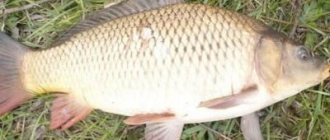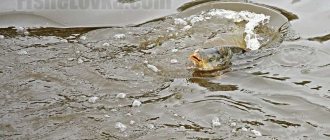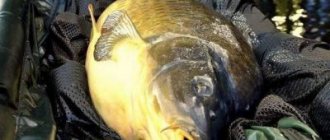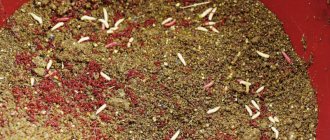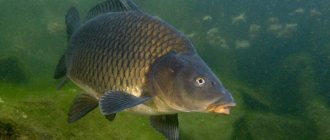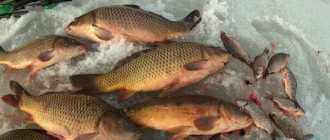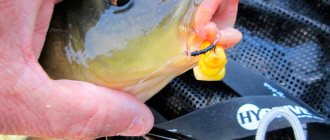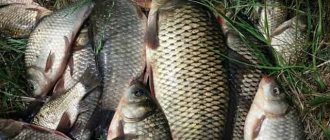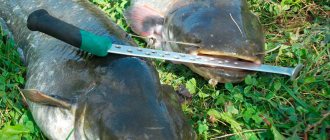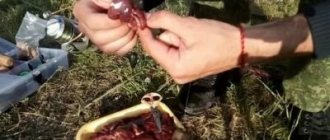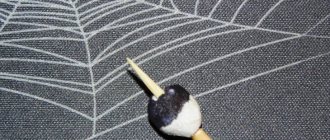Carp fishing is so diverse that there are not even enough fingers on your hands to count all the existing fishing methods that are used today by lovers of quiet hunting. Boilies, spinning rods, float rods - these tackles are indispensable on lakes. Carp is considered a very strong fish: it puts up quite a strong resistance before ending up in a person’s cage. Judging by the reviews, this is quite exciting and exciting fishing. Carp fishing has its own secrets and features. And first of all, this concerns the choice of bait. This is exactly what this article will discuss.
Prey Habits
For fishing to be effective, you should know some of the features of catching prey. Beginners should ask what the carp bites on in a given body of water, and what gear will be the most catchy. Only in this case can you hope for a rich catch.
Carp is a schooling fish. However, the largest individuals try to stay separate from the smaller ones. Despite this, in one flock there are carps of various weights and sizes. Usually they do not “walk” densely, but gather in long lines. The number of individuals in a school is never as large as, for example, among bream. Usually it is equal to several dozen fish.
Carp is found in almost all bodies of water. He usually looks for deep and wide areas where there is a weak current or standing water, a soft clay or moderately muddy bottom. Carp love warm water, preferring heavily overgrown reservoirs. This fish stays at depth.
Secrets of carp fishing
In the summer months, when the reservoir is already very warm, this underwater inhabitant goes both to areas with currents and to shallow waters. At this time, you need to look for carp in almost all old channels, small and large valley reservoirs, as well as in deep holes, ponds and flooded sand and gravel pits. The most favorite places for this fish are long-flooded meadows and fields. In the summer months, carp stay at a depth of two to five meters, depending on the sharpness of the bottom drop. As the weather gets colder, the schools go deeper in the beginning of autumn, and closer to winter they need to be looked for almost at the bottom.
Particularly difficult when catching this fish is the process of fishing. Correctly chosen carp bait will easily lure prey to itself, and the bite will not keep you waiting. But in order to pull the caught handsome fish out of the water, the fisherman will need good skill and experience.
Every self-respecting carp angler must have patience, endurance, caution, good physical shape and instinct. He must know what carp eat in nature in order to choose the right bait for a particular reservoir, and, of course, have all the necessary gear on hand. Only in this case can you hope for a solid catch of this tasty fish.
Which method to choose for carp fishing?
To catch carp on the top, you need to take a block of cake and drill holes in it for hooks (on the sides) with a drill. After that, using a carabiner, secure it to the fishing line. Since this gear is used for catching large fish, and the bite will be quite intense, for fishing using a fly rod, take a strong and thick rod and a reliable inertia-free reel complete with a friction brake and a baitrunner.
When fishing with a spring, a special feeder is made, which has the shape of a spring. A weight is placed at the bottom so that it does not float up, and then it is filled with a mixture for feeding fish. Long leashes with hooks are attached to the edges of the feeder, onto which bait is pinned. This tackle is often used by fishermen, as it can be successfully used when fishing in rivers with fairly strong currents. The success of fishing depends on the correct selection of bait composition. Usually small fish are caught on the spring.
Fishing using a feeder is a bit similar to the previous method. In this case, feeders of a different design and other methods of its attachment are used. Since bloodworms or maggots are usually used for complementary feeding, it is better to use closed feeders. With the help of such gear you can catch carp far from the shore, and even beginners can catch large fish.
Carp bite most readily on the following types of bait:
There are not many baits for carp; mainly when catching them they use:
Equipment
When choosing a fishing rod, you should pay attention first of all to bottom or float fishing rods, the strength and flexibility of which have excellent characteristics necessary for catching this strong fish.
The size and thickness of the fishing line must be selected individually in each case. For example, fishing for a medium-sized carp requires a diameter in the range from 0.15 to 0.25-0.27 millimeters. For larger representatives, you should take a fishing line from 0.3 to 0.37 mm so that it breaks when fishing. The size of the hook must completely fit the bait. It is optimal if they are slightly smaller than the carp bait itself. When fishing for this fish, feeder lovers can select the setting at their discretion based on the system being used.
Methods for placing maggots on a hook
We have discussed the main points above, now the only thing left to do is find out how to properly plant maggots. Let's look at the most popular methods among anglers.
You can use any of them, but try to base it on the size of the fish. If you are going to catch crucian carp, then the standard method of attaching one maggot will do. And if your goal is exclusively large crucian carp, carp, tench or other similar fish, then it is better to use a bunch of maggots.
Method No. 1
The most common and simple way. All you need to do is insert the tip of the hook through the skin, near the head of the maggot. The head of the maggot is located on the blunt side of the body, on the opposite side of the black dot at the sharp end. The black dot is its back.
Do not try to pierce the maggot from the side of the head; during installation, it shrinks, pulling the head inward - this makes the installation process very difficult. Proceed in another way - thread the tip of the hook, as if picking up the head from below, so to speak, by the “neck”. From the bottom up, the maggot clings much easier. It is necessary to hook the tip of the hook into the very skin so that it does not spread and remains mobile as long as possible.
The hook tip can be left bare. If you want, you can hide it in the body of the bait. If you are going to hide it, then thread the maggot through with a small margin for the sting, and start piercing its body about 3 mm from the head.
Method No. 2
Now I would like to talk about planting a bunch of maggots. The beam is used when they want to cut off bites from small fish or, if there are no small fish in the reservoir, to attract more attention from large ones. A large fish, even if it’s just a crucian carp, can ignore a single maggot, but its reaction to a bunch of two, three or more maggots will definitely be positive.
But if we are talking about carp fishing, then there is nothing to discuss. When catching this fish, you should definitely use a bunch of maggots for bait. Large carp are caught on maggots in exceptional cases, but specimens up to 2 kg are not uncommon.
A bunch of maggots is mounted in the same way as a single one, you simply move the first mounted maggot further along the fore-end and hook the next one. Usually 2-3 maggots are placed in a bunch; when catching larger fish, more larvae are caught.
Method No. 3
One of the good ways to attach a maggot to a hook is to pierce it through the head using the stocking method, with the sting coming out in the middle of the body. This type of attachment will not allow small fish to pull the bait, and this is very important when a small thing, like a bleak, prevents you from catching larger fish.
This method is suitable for catching fish that are capable of swallowing maggots along with the hook, otherwise the fish will hit the hook and leave. Therefore, for this method of hooking it is better to use small hooks.
Method No. 4
This method is the opposite of the previous one. The task is to thread the maggot through the middle of the body, leaving the sting hidden inside its body. This method is good for catching small fish, since they will not hit the hook and be afraid of the bait. But a significant drawback is that the maggot will quickly lose activity and freeze, although even a motionless larva will be bitten well by fish, especially small ones.
Due to the fact that maggots with this method of baiting do not live long, it is best to use them during periods of active biting, when the fish do not need to be additionally stimulated to bite with active baits. If the fish bite is sluggish, use other methods listed above, which allow the maggot to remain active for as long as possible after being hooked.
Method No. 5
This method is suitable for catching inactive fish. To do this, you just need to put a bunch of maggots on the hook and cut off the very tip of some of them with scissors. Then the maggot will begin to emit a stronger smell that attracts fish and it will be easier for it to find your bait.
Only one of the maggots should be intact so that it does not stop moving on the hook. This way you will attract fish both by the aroma and the movement of the bait.
The site ryba4ok.ru tried to present the information for you as clearly as possible, so that you do not have any unnecessary questions, and showed 5 ways to put maggots on a hook with a photo. So that you can clearly see how to attach this bait, we have prepared another video lesson for you.
The best baits for carp
This fish is often called the “freshwater pig”. She is really quite gluttonous, and it is this characteristic that directly affects her size. This underwater inhabitant of freshwater bodies lives for quite a long time - up to fifty years, unless, of course, he gets hooked by a lover of quiet hunting. But you shouldn’t think that almost every carp bait will be swallowed by it. Firstly, this fish almost always shows maximum suspicion and caution, and secondly, even despite such gluttony, it is very picky. That is why avid fishermen, who know all the secrets of carp fishing, pay great attention to ensuring that the right bait is chosen for a particular body of water. You should go after carp already knowing the habits of the prey well. In addition, she should be fed in advance. Experienced fishermen say that well-chosen carp bait, sharp hooks and bait are the key to a successful hunt.
Unlike many other representatives of the aquatic kingdom, this fish has a special taste and a highly developed sense of smell.
The carp's appetite is all-consuming, so there is no specific recipe for feeding it. In this matter, fishermen base their decisions on what the prey eats in a particular body of water. Here everyone uses their own preferences and experience developed over many years. Beginners should start from knowledge of what carp eat in nature at different times of the year and create a diet using this method. For example, before spawning it is better to add flavors and other flavorings.
How to hook?
Thanks to its thick skin, the maggot is easily placed on the hook and stays on it for a long time. But this property of the bait can also be attributed to its disadvantages, since when biting, the fish may not be hooked, and accordingly the tackle will remain empty. Therefore, it is advisable to put the maggot on the hook along its entire length. But fishermen also use several other options:
When the bite is sluggish (and this means often), it is desirable that the maggot remains alive, and even retains its agility. This provokes fish better than a motionless dead larva. But the maggot can retain its vitality provided that its insides are not damaged by the hook. Therefore, the classic recommendation for baiting a maggot looks like this: - use the tip of a hook to pry the skin near the head between the so-called “eyes”, then bring the sting out under the skin and move the maggot towards the forearm.
Even experienced fishermen do not know exactly how best to place a bloodworm or maggot on a hook, so that on the next cast the fish will finally stop resting and start catching.
The question “how to best place bait on a hook” is one of thousands among experienced fishermen, in the context of their constant search for secret techniques for successful fishing. And for beginner fishing enthusiasts, this question is direct and essential - really, how to properly attach a bloodworm or maggot to a hook?
Place the bloodworm on the hook
The usual recommendations for planting bloodworms are as follows.
- Only extremely thin “crank” hooks are used. You shouldn’t even try to pull a moth onto a “carpokiller” hook.
- Bloodworms are selected before baiting. The largest larvae with the most pronounced fighting qualities are used. It bites much better on a moving larva.
- We replace the bloodworm on the hook with a fresh one in time. Then you can get the most from the reservoir.
Hanging
One bloodworm is taken with the fingers of one hand (be careful not to crush it). The hook is taken with the other hand. The bloodworm is then pierced with a sting approximately between 3 and 4 segments from its head. The hook is removed from the larva near the head itself, and it moves to the bend of the hook. That's all - the living creatures do not lose their vitality for a long time (about 15 minutes) and remain attractive to fish.
According to some anglers, the attractiveness of the bait will increase if a pair or three larvae are attached to the hook in a similar way. This is especially true when it comes to catching heavy fish.
A bloodworm hanging from a hook is good when the fish is moderately active and will greedily grab it, swallowing it along with the hook. But this rarely happens. Much more often, the fish carefully takes the mosquito larva by the tail and pulls it off the hook, leaving the angler with only empty hooks over and over again.
Stocking
With the weak, the method of baiting bloodworms with a “stocking” helps. It's easy to do. In the same way, the larva is pierced near the head, only this time the sting is directed towards its tail. With careful movements of the fingers, it is pulled onto the hook. Tail droop is minimized as much as possible, but the hook is not removed from the body. Now the fish has nothing special to pull off the larva, and it captures it immediately along with the hook.
Tips for fisherman: How to lure crucian carp to the fishing spot in summer - Detailed review
Accidentally hitting
Everything is not bad, but such actions require a lot of time and sleight of hand. But what to do in a situation when the fish is really hungry and every second counts? Or when in the cold your fingers are hard to control? Or in a situation where your hands are shaking and you can’t even see one bloodworm? Then the method of attaching a bloodworm to the rescue comes to the rescue.
The bloodworm ball is grabbed with two fingers. Then, the hook is pierced several times through the entire ball, and within a second, one or several bloodworms or parts of them are somehow picked up on it. And such a bait is sent into the water (under the ice), and with a passionate bite, the fish are caught no worse than if the fisherman very diligently put on the bloodworm for several minutes and examined the results of his work.
Big bunch - big catch
To catch large fish, anglers sometimes use a whole bunch of bloodworms tied to a hook. For example, this is often done when fishing for bream. A small piece of nipple elastic will help secure the bunch of bloodworms to the hook. When fishing, the entire bunch is planted in seconds - just insert the sting into the nipple, which already contains several bloodworms. And the thickness of the hook now does not play any role, which is a big plus for catching large fish.
But how to thread a bloodworm into a nipple, and even a whole bunch?
How to thread a bloodworm through an elastic band
The simplest device that every angler can make with his own hands will help. Take a plastic handle and throw out all the guts. The body is cut with a knife “on an oblique”, so that at its cut end something in the form of a scoop with a pointed nose is formed. Then a short piece of elastic is pulled onto this body through its sharp part. Several bloodworms are placed on the scoop, and the nipple is pulled off the handle, simultaneously capturing all the bloodworms located “in the scoop.”
Having spent half an hour at home preparing the bunches and n-number of elastic bands, the fisherman will come to the pond, as they say, fully armed. By the way, the nipple, after the bloodworm is eaten by the fish, can be used for the second pass.
If bloodworms can be planted in any way you like - “as it turns out” or as your imagination dictates, and at the same time, not without reason to count on a bite, then with maggots the situation is somewhat more complicated. One circumstance adds special features to its use - this larva has a very hard and durable skin.
Live maggot
When the bite is sluggish (and this means often), it is desirable that the maggot remains alive, and even retains its agility. This provokes fish better than a motionless dead larva. But the maggot can retain its vitality provided that its insides are not damaged by the hook. Therefore, the classic recommendation for baiting a maggot looks like this: - use the tip of a hook to pry the skin near the head between the so-called “eyes”, then bring the sting out under the skin and move the maggot towards the forearm.
This way you can plant several maggots to catch large fish. After biting (catching a fish), it often happens that the maggot on the hook remains intact, alive and fidgety, and is suitable for re-casting.
Baiting options
A maggot can very easily take revenge on a fisherman for being hooked to be eaten by fish. It wraps itself around the hook and simply covers the sting with its body. Further: - the fish bites, the float quickly moves away to the side with a dive, the fisherman even waits to spot the carp (whale) for sure, aaaand... and on the hook there is only a smiling maggot.
If the larva covers the sting with its hard skin, then it will not be possible to hook the fish. Therefore, when the bite is confident, fishermen bait the maggot with a stocking, after which it quickly dies. Or, many fishermen recommend doing a combination of baiting techniques - a couple of larvae are put under the skin to keep them alive, and then a maggot pierced through its length is placed near the sting.
Whenever baited, the hook tip is always removed from the body of the blowfly larva, and remains free for hooking fish.
How to make larvae immobile
Sometimes, for conditions of confident biting on bait, or when there is not enough time at competitions, anglers specially use killed larvae so that they do not interfere with the bait with their fidgetiness and do not make idle hooks. Maggots are killed with heat. In order not to cook it over a fire, the larvae are first cooled (spring water), then immediately placed in hot water (tea from a thermos). After this procedure, the fisherman confidently throws maggots on a hook towards the ever-hungry mouth of the long-awaited carp.
Types of bait
It may seem to many that all they have to do is be on the shore of a body of water, and this fish will begin to bite on its own, without any special effort on the part of the fisherman. This is far from true.
For fishing you will need both excellent tackle and good carp bait. Before starting fishing, experienced floaters almost always try to carefully prepare the place, feed the casting area, determine the structure of the bottom and find the desired depth. And success almost always depends on the right bait. That's why it deserves special attention. Only those who know the secrets of carp fishing can hope for a rich catch, so studying the preferences of the intended prey, according to experienced hunters, is the key to success.
This fish prefers a wide variety of baits. Its tastes change depending on the time of year or the specific habitat where it gets used to certain foods. The weather also affects what carp bite. Therefore, in rainy weather you need to use one attachment, and on sunny days another. There are three types of carp bait:
- animal;
- vegetable;
- special.
The first type includes dung worms, maggots and their pupae, larvae of dragonflies and caddis beetles, and bark beetles. Vegetable bait for carp is pearl barley, boiled potatoes, peas - green canned or simply boiled, cottage cheese, corn kernels, bread, etc.
Special attachments occupy a special place. This delicacy primarily includes boilies. This carp bait came to us from distant England, and today it is sold in large quantities in all specialized fishing stores.
Baits and groundbaits for carp fishing
Carp very quickly gets used to any new food, both plant and animal. New baits will also not cause long-term habit in carp. Fishing with silkworm cocoons and boilies is the basis of all carp fishing. Granules of special fish feed are what carp readily bite on. Of course, you first need to feed the fish by throwing bait near the place where the carp jumps out.
Bait for carp fishing is prepared from different types of grain mixture. For example, corn, peas, and pearl barley are boiled together as complementary foods. Canned corn will do as well. You can flavor the bait with cocoa powder and roasted and then crushed peanuts. Carp really like this preparation.
Carp are partial to dung worms. Recently, carp fishing with boilies has become more and more widespread. So what are boilies? These are boiled flour dumplings with many additives that are suitable for both bait and bait. Boilies can be quite dense and sink. Sometimes floating boilies are also used. They are sold in specialized stores, but it is very interesting to cook them yourself.
Article on the topic: Color of bait for carp fishing
As for the dough, it is better to prepare it from pancake flour, adding raw eggs. Carp will not be able to resist such baked goods. Dry thyme is used as a flavoring bait. The dough is rolled into dumplings - small sausages, cut into portions and made into balls. Then they are boiled until tender, with a little salt.
A good bait for carp is boiled potatoes. It is necessary that small tubers or chopped cubes, while remaining soft enough, sit firmly on the hook.
Sports fishermen give special honor to carp; they annually organize sports fishing competitions. No other fish is as celebrated as the carp. Fishermen prepare separate carp gear with special hooks. After all, a specimen weighing 10-16 kg is not easy to pick up. And then what is more difficult to hold with a traditional single hook and line.
There is an opinion that the carp, resisting on the fishing line, tries to “saw through” it with its first ray of the dorsal fin. Such cases may happen. Indeed this beam is very strong with several notches. He is able to fray the fishing line.
Anglers call non-pond, wild carp carp carp. For example, in the lower reaches of the Volga there are large quantities of it. This species reaches very large sizes. The principle of catching it is exactly the same as carp. For this purpose, animal baits are used: worms, mollusks, crayfish.
To catch large carp, fishermen use various tackles, devices and baits.
Worms
This type of bait is especially successful when fishing for carp on the lake in the spring or autumn months. At this time, this fish is especially active, and therefore its menu in the natural environment also consists of similar food. The classic bait for carp in summer is also worms. Getting them, especially in rural areas, is not difficult. Carp are caught mainly on dung beetles, but prey can also bite well on ordinary earthworms.
In those reservoirs where underwater inhabitants are not spoiled by baits of artificial origin, this animal bait will be an ideal food.
According to experienced carp fishermen, dung beetles are preferable to earthworms because they have a bright and attractive color and, of course, an alluring smell. In addition, they are more tenacious and behave quite actively when hooked. Experienced fishermen advise hooking several small dung worms at the same time, since one large worm is used primarily for catching crucian carp.
Priority baits for catching carp
What bait should I use to catch carp? The most promising baits that can be used when fishing for carp are sweet corn or green peas. Due to their composition, they stay on the hook quite well. Corn and peas are classic baits that can quickly catch fish. They can be used both on the river and on the lake. In addition, peas tolerate power casting quite well.
The best bait for carp is different for every fisherman. For example, many people cannot imagine fishing without pearl barley. Of course, this is a fairly universal bait. It should be cooked for about a quarter of an hour over low heat; you can add breadcrumbs, a little honey or sugar along the way. Carp like this aroma. If pearl barley is used, then it is steamed in a thermos, into which you also add anise drops as a flavoring. Always following a scent, a fish will definitely encounter the bait, and its capture will be guaranteed if the hook is carried out correctly.
Among the porridges one can also highlight mastyrka, a special bait made from pea cereals and semolina. You can add sunflower oil or honey as a flavoring. To give it additional viscosity, a rational solution would be to add a little wheat flour.
Bread is also a fairly effective bait for carp. To use it, the fisherman needs to take a large piece of bread crumb, roll it out into a ball, and place it on a hook. After being directly lowered under water, swelling, such a bait will attract fish. An analogue of bread can also be unleavened dough, to which you can add a flavoring agent, for example, cake or processed cheese.
It is best to use boiled potatoes when fishing for carp, but not too loose, as they can quickly fall apart on the hook. Fresh and young unprocessed potatoes, carp do not always reward with their attention. As for flavorings, the aromas of crab and garlic work well on carp in cold water. Carp also loves the aromas of strawberry, peach, and plum.
If you purchase dried peas, you should soak them before fishing (a day before), then dry them thoroughly and take them with you fishing. Once hooked, the fish can smell the peas at a considerable distance. You can also combine corn, peas, barley, the resulting mixture can be used.
Maggot
Silent carp hunting using this particular bait can be very effective. If you put several maggot larvae on a hook, then the carp is unlikely to refuse such a delicacy. The smell of this bait is incredibly attractive to him. Moreover, many experienced carp fishermen plant the pupae together with adult maggots and even worms.
If there are a lot of trees growing in a body of water directly near the shore or right in the water, then it’s worth trying to catch bark beetle larvae. According to many, this is the best bait for carp in the spring. You can get the larvae from under the bark of old trees. You need to attach them with your head to the hook, so that the body hangs down.
Stocking
An effective but complex method. It allows you to significantly save bait, since you can catch several fish with one larva and it will not cease to look attractive.
The larvae must be planted in this way
:
- It is necessary to thread the hook tip through the entire body of the bait. It is best to start baiting from the head. Try to ensure that the dough is completely level.
- Do not put pressure on the bait, otherwise it will simply tear and only skin will remain on the hook, which is unlikely to attract fish.
This method of baiting is most often used for fishing
:
- crucian carp;
- Carp;
- Roach;
- Guster.
Standard method. One of the simplest and most often used when fishing. To carry it out, you need to take the larva and insert a hook into it under the skin from the side of the head. In this case, the insides of the maggot are not injured and remain intact. Visually from the outside you can see that the larva is hanging on the skin pierced by a hook.
When fishing, advanced fishermen take several types of baits and attachments for catching fish. There are also many foods available for crucian carp, which the fish readily bite on. It is caught both on plant food and on animal food, which includes all kinds of worms, larvae and, of course, maggots. Today we will tell you how to fish for crucian carp using maggots, and how you can put it on a hook.
Catching crucian carp while fishing with maggots is not much different from fishing with a worm. You just need to pay attention to some aspects when fishing.
Maggot needs to be renewed on the hook over time, as it periodically loses its active function and becomes unusable. Only one shell remains of it and it has to be replaced. The larva can also roll onto the fishing line, making the bait useless. To avoid this effect, you can install a piece of cambric at the place where the hook is attached to the fishing line. The result will be something like a limiter through which maggots will no longer be able to move.
There are several ways to place maggots on a hook. Let's look at some of them.
Standard method. One of the simplest and most often used when fishing. To carry it out, you need to take the larva and insert a hook into it under the skin from the side of the head. In this case, the insides of the maggot are not injured and remain intact. Visually from the outside you can see that the larva is hanging on the skin pierced by a hook.
Tips for a fisherman: How to put a maggot on a hook for crucian carp - Answers for beginners
Ring planting. This method more securely attaches the maggot to the hook and reduces idle fish bites. To do this, just as in the first case, the larva is pierced from the side of the head and the withdrawn sting pierces the skin from the side of the tail. Moreover, the hook itself remains outside and will be visible. It turns out to be a kind of maggot ring with a bare hook. The survivability of the larvae in this case is noticeably reduced, which is a disadvantage of this type of mounting.
Thread along the body. The maggot is pierced with a hook from the side of the head to the middle of the larva. Then the hook tip is brought out. This method must be performed carefully so as not to damage the insides of the bait. This method is best used when catching large crucian carp.
Bundle placement. Typically used to attract large fish. The principle is the same as when planting worms. 5-3 larvae are strung on a hook to form a lump of active maggots.
In addition, maggots are included in so-called “sandwiches”. This is a combination of several types of bait on one hook. For example, they are caught using compositions such as a maggot-worm, a maggot-bloodworm, and the maggot can be put on the hook last because of its stronger structure. Good luck in fishing!
Despite the availability of new interesting and effective baits, both natural and artificial, maggots always remain popular among fishing enthusiasts. This bait is easy to use, can be used to catch any fish, which confirms its versatility, and maggots are also easy to find or breed yourself.
Fishing for corn
The most important rule in any vegetable bait is its proper preparation so that its taste is fully preserved. Today, corn is very common for this purpose. According to many, this is the best bait for carp, and also the most common. Recently, fishermen have increasingly begun to use a canned version of this product, which not only has a sweetish taste, but also has a very enticing aroma. In general, it is very easy to give canned corn any color and desired smell. This requires only a few drops of flavoring or just a little specialized dye, which are added to the container with the product. This bait is attached to a hook or a hair type of equipment.
However, despite the popularity of the canned variety of corn, experienced fishermen often prefer do-it-yourself bait prepared the old fashioned way. And although this process requires a certain amount of time, nevertheless, many believe that it is worth it. To prepare carp bait from corn, you need to soak it and leave it for twenty-four hours. Then the corn is subjected to heat treatment - it is boiled for one to two hours. After this, the grains are left for two to three days to mature. You can prepare a large amount of this bait in advance, leaving it in the refrigerator for storage.
Peas
It must be remembered that baits of plant origin “work” exclusively in the summer season. Catching carp with peas is also incredibly common. In addition, this cereal is available to every fisherman and it attracts the inhabitants of freshwater bodies well. Bait the peas directly onto the hooks. Moreover, carp fishermen equally use both a canned product and bait prepared with their own hands.
To make this bait yourself, you need to soak the peas for eight to ten hours, then boil them for an hour, and then dry them for thirty to forty minutes. And although this is a fairly easy process, it nevertheless requires a fair amount of time. Catching carp with peas is especially effective in mid-summer, when bait of animal origin is not used.
Bread balls
At all times, the carp bit well on this bait. To make bait, both rye and wheat varieties of bread are used. However, we must remember that the effectiveness of fishing depends both on the specific body of water and on the taste preferences of the prey. You can put a formed ball of bread pulp on the hook or just a small piece of crust. This bait is used for carp in the summer both in the upper layers of the reservoir and directly at the bottom.
You can also make your own dough instead of using store-bought bread. To do this, barley and wheat are pre-soaked for three to four hours and boiled until the grains are soft. To prepare such a dough, you can also take one or several types of flour at once and prepare a dough that should not stick to your hands.
Nozzles
As bait for catching carp, fishermen use worms, maggots, cake, potatoes, pea grains, corn, etc. Vegetable baits are of the greatest interest to anglers.
The main bait for catching carp is hard-boiled unsalted porridge or dough made from corn grits or flour. The dough is made into balls the size of a nut, into which the hooks are hidden.
On the rivers and reservoirs of Ukraine, carp are caught using so-called dumplings - pieces of boiled dough.
Recipe for carp bait:
The boiled dough attachment is made as follows. Place a tablespoon of flour into two small plates. Add the yolk to one plate, and the white of one egg to another, and a few drops of valerian. Then add a little flour to make the dough stiff. Fill 2 matchboxes with the resulting mass, tie them with thread and lower them into boiling water. After a quarter of an hour, remove, cool and remove the boxes. The resulting cubes of boiled dough are yellow and white. When fishing, cut a cube of the required size from a block and place it on a hook. This attachment does not open for a long time and holds quite firmly on the hook.
The most effective attachment is considered to be porridge made from semolina.
Happy fishing!!!
How to cook makukha
For carp, which is considered a desirable trophy, you need to select bait based on the season, the specific body of water and the taste preferences of this fish. This underwater inhabitant has a very good sense of smell. Apparently, this is why catching carp on top is considered incredibly effective. The result this bait gives is truly amazing. Apparently, this is why in some European countries, carp fishing with the top is prohibited.
The effectiveness of this bait is determined primarily by its incredible aromatic properties. It is best to use sunflower seed cake as a raw material for preparing makukha for carp. It is this culture, compared to other oilseeds such as rapeseed, flax, etc., that has the strongest and most attractive aroma for fish.
For fishing on the top, it is best to use a makushatnik - a passive fishing tackle suitable for bottom fishing. It is specially adapted for this type of bait and is a platform with hooks and sinkers attached to it on a thick fishing line.
Choosing a hook for fishing with maggots
More than once I have seen fishermen trying to put a maggot on a thick carp hook. And while this can be understood for carp fishing, for bream and even roach fishing, it is not. The choice of hooks is generally a separate topic, but the main thing to remember is one simple rule:
The hook always matches the bait!
That is, for maggots, you will need your own hook, it should be thin and sharp. Only then will fishing with maggots bring results, because the larva will be more tenacious and attract fish longer. You also need to monitor the sharpness of the hook.
See also our video: Opened the season with a large bream
